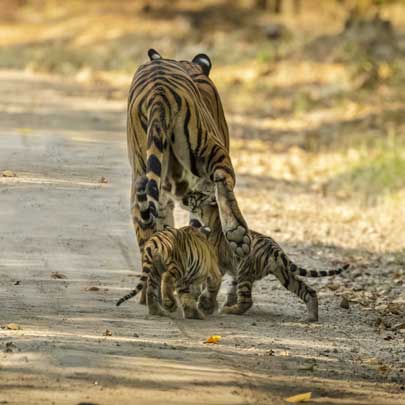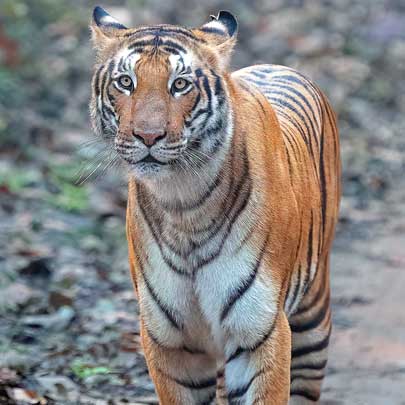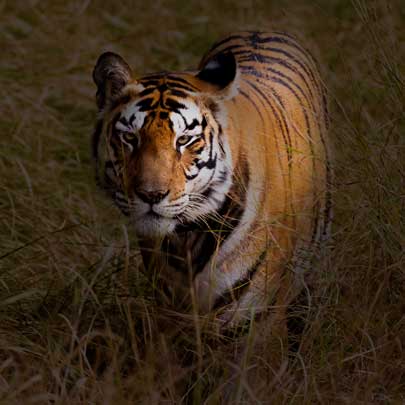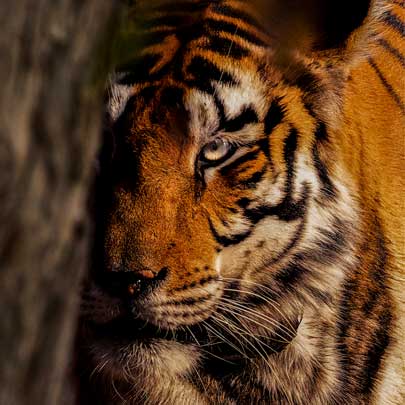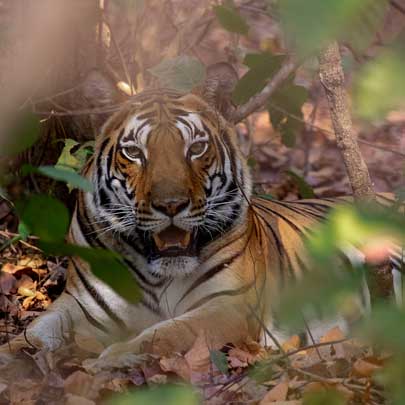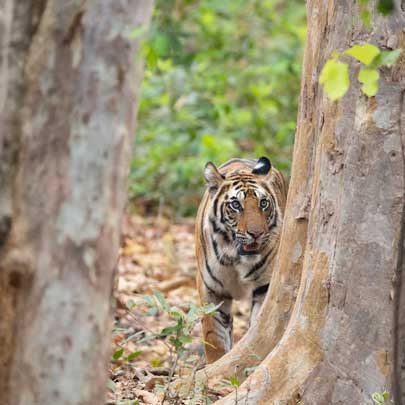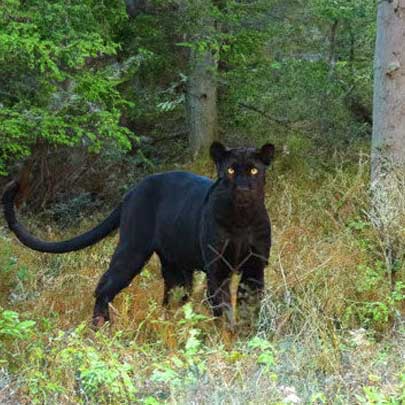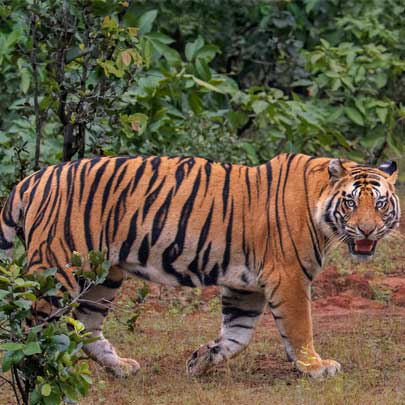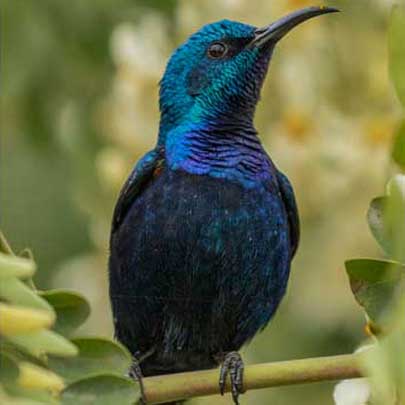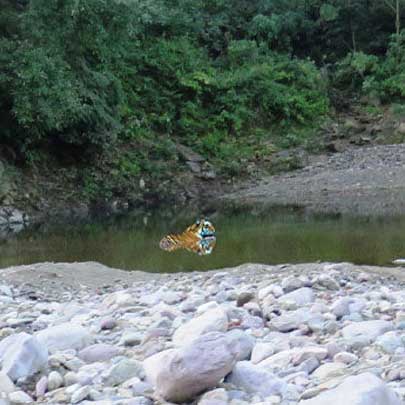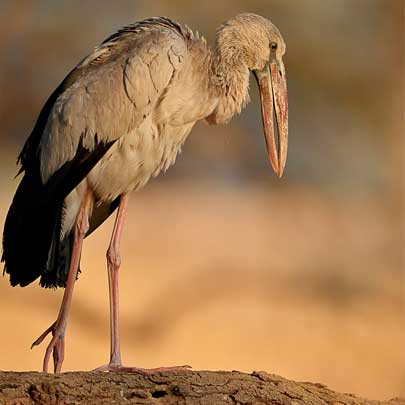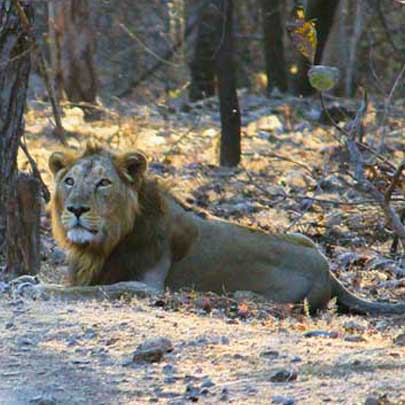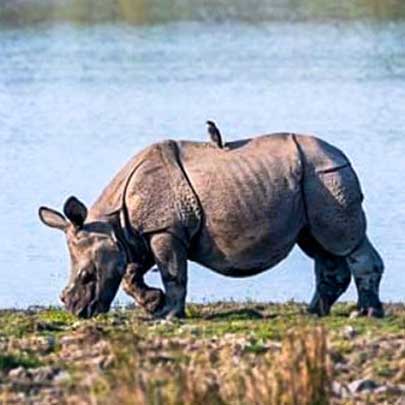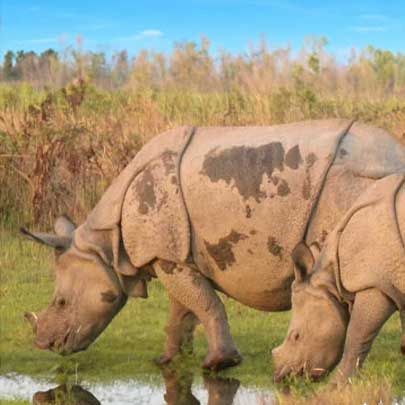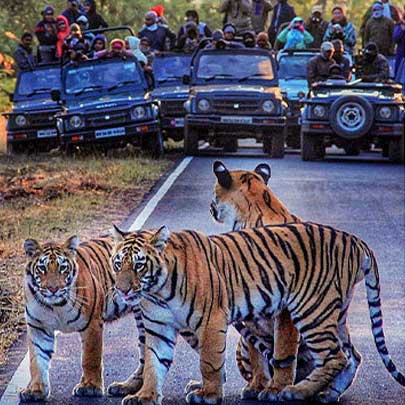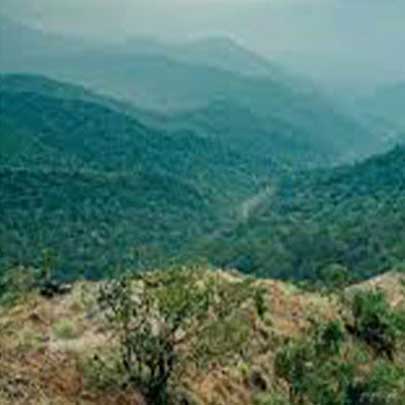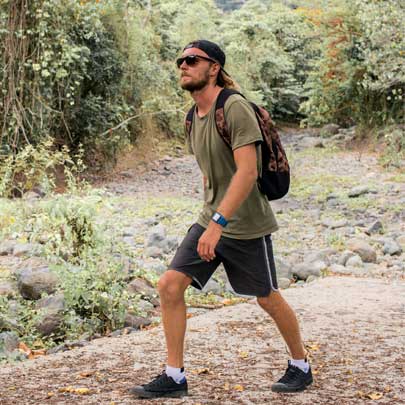Top 5 Wildlife Tours to Experience in India
Top 5 Wildlife Tours to Experience in
India

India, with its rich biodiversity and varied landscapes, offers some of the most thrilling and awe-inspiring wildlife experiences in the world. From dense forests to sprawling grasslands and majestic mountain ranges, India's national parks and wildlife sanctuaries are teeming with exotic flora and fauna. Whether you're a passionate nature lover, wildlife photographer, or eco-conscious traveler, embarking on a wildlife tour in India is an experience like no other.
In this blog, we explore the top 5 wildlife tours in India that you must experience at least once in your lifetime. We also spotlight how Wildlense Eco Foundation, a leader in eco-tourism and conservation-based travel, can help you connect deeper with nature through their sustainable wildlife tours.
1. Kanha National Park, Madhya Pradesh – The Inspiration for The Jungle Book

Best Time to Visit: October to June
Famous For: Bengal Tigers, Barasingha (swamp deer), leopards, wild dogs
Nestled in the heart of Madhya Pradesh, Kanha National Park is often called the soul of India’s wildlife tourism. Immortalized as the setting for Rudyard Kipling’s The Jungle Book, Kanha is a mosaic of sal forests, meadows, and bamboo thickets. It is one of the best-managed national parks in India and offers a higher chance of spotting the majestic Bengal tiger in its natural habitat.
Apart from tigers, visitors can encounter over 300 species of birds, leopards, sloth bears, and the rare hardground Barasingha, which has been successfully conserved here.
🌿 Wildlense Eco Foundation offers curated Kanha jungle safaris that emphasize minimal ecological disruption. Stay in eco-lodges, enjoy guided nature walks, and participate in conservation workshops for a meaningful wildlife tour.
2. Ranthambhore National Park, Rajasthan – Tigers in the Land of Kings

Best Time to Visit: October to April
Famous For: Bengal Tigers, ruins of Ranthambhore Fort, dry deciduous forests
Located near the historic town of Sawai Madhopur, Ranthambhore is one of the most accessible and popular tiger reserves in India. Its unique blend of wild nature and medieval history offers a compelling experience. Imagine a tiger roaming near 10th-century ruins – that’s Ranthambhore for you.
This park is known for frequent tiger sightings, especially around the water bodies in the summer months. The picturesque landscape also includes leopards, hyenas, jackals, marsh crocodiles, and a rich variety of birds.
While Wildlense Eco Foundation doesn’t directly operate in Ranthambhore, it often collaborates with local eco-tour operators to ensure that every trip upholds sustainability and supports local conservation.
3. Jim Corbett National Park, Uttarakhand – India’s Oldest National Park

Best Time to Visit: November to June
Famous For: Bengal Tigers, elephants, birdwatching, riverine ecosystems
Founded in 1936, Jim Corbett National Park is India’s first national park and the birthplace of Project Tiger. Spread across the foothills of the Himalayas, Corbett boasts grasslands, dense forests, and the Ramganga River — home to aquatic life including crocodiles and fish species.
Visitors can enjoy elephant safaris, jeep safaris, and even stay in forest rest houses inside the park. With over 650 species of birds, Corbett is also a paradise for ornithologists and photographers.
Eco-tourism is strictly regulated here, and Wildlense Eco Foundation supports sustainable travel models by encouraging tourists to follow wildlife codes and contribute to local community programs.
4. Kaziranga National Park, Assam – Land of the One-Horned Rhino

Best Time to Visit: November to April
Famous For: One-horned Rhinoceros, wild water buffalo, swamp deer, elephants
Designated as a UNESCO World Heritage Site, Kaziranga National Park in Assam is home to over two-thirds of the world’s population of the endangered one-horned rhinoceros. Set against the backdrop of the Eastern Himalayas, the floodplains of Kaziranga teem with life, making it one of the most biologically diverse parks in Asia.
Apart from rhinos, Kaziranga supports a high density of tigers, elephants, and unique wetland birds such as pelicans and storks. It’s also one of the few places where you can see the rare Hoolock Gibbon.
Although Wildlense Eco Foundation is based in Central India, we promote travel to Kaziranga through responsible partners and provide detailed guides and consultation to plan a low-impact journey.
5. Pench National Park, Madhya Pradesh – A Hidden Gem for Wildlife Enthusiasts

Best Time to Visit: November to May
Famous For: Tigers, leopards, jungle cats, Gaur (Indian Bison), birds
Often overshadowed by its more famous neighbors, Pench National Park offers a tranquil yet thrilling wildlife experience. Straddling the border of Madhya Pradesh and Maharashtra, Pench is rich in biodiversity and beautifully forested landscapes.
Pench is particularly attractive for those who prefer fewer crowds and a deeper connection with nature. It also plays a vital role in the “Tiger Corridor” between Kanha and other reserves.
🌱 Wildlense Eco Foundation is actively involved in wildlife conservation and sustainable tourism at Pench. Our tours are designed to educate and inspire visitors while supporting local biodiversity and forest protection initiatives.
Why Choose Wildlense Eco Foundation for Your Wildlife Tour?

As eco-tourism gains importance, it is critical to choose travel partners who prioritize conservation, education, and local empowerment. Wildlense Eco Foundation is one such organization that designs nature-based tours with a purpose.
Here’s why travelers choose Wildlense:
✅ Eco-Friendly Lodging: Our accommodations are built using sustainable practices to minimize carbon footprint.
✅ Local Collaboration: We work with forest departments and tribal communities to promote responsible tourism.
✅ Personalized Itineraries: Whether you’re a solo traveler, family, or student group, we tailor wildlife tours to suit your goals.
✅ Education-First Travel: Our trips include conservation briefings, field photography lessons, and forest ecology insights.
✅ Reinvesting in Nature: A portion of every trip goes toward supporting wildlife protection and afforestation efforts.
Whether you want to spot a tiger in the wild, study forest biodiversity, or simply reconnect with nature, Wildlense Eco Foundation provides the experience with integrity and heart.
Travel Tips for a Responsible Wildlife Tour
To make the most of your wildlife trip while respecting nature:
-
📷 Carry binoculars and a zoom lens to observe animals from a distance
-
🤫 Maintain silence and avoid loud colors or perfumes
-
🚯 Never litter in the forest — what you carry in, carry out
-
🚙 Stick to designated paths during safaris
-
📝 Book with eco-certified operators or NGOs like Wildlense Eco Foundation
Final Thoughts
India is a treasure trove for wildlife lovers, offering some of the richest and most diverse ecosystems on the planet. Each sanctuary and national park has its own unique magic. By choosing eco-conscious travel and responsible tour operators, you contribute not only to preserving these habitats but also to uplifting communities that coexist with wildlife.
Explore these top wildlife destinations with awareness, curiosity, and care — and let Wildlense Eco Foundation be your guide to ethical and immersive nature tourism.
Interested in booking your next wildlife experience?
Visit Wildlense Eco Foundation to explore our tours and plantable products that support conservation.

























